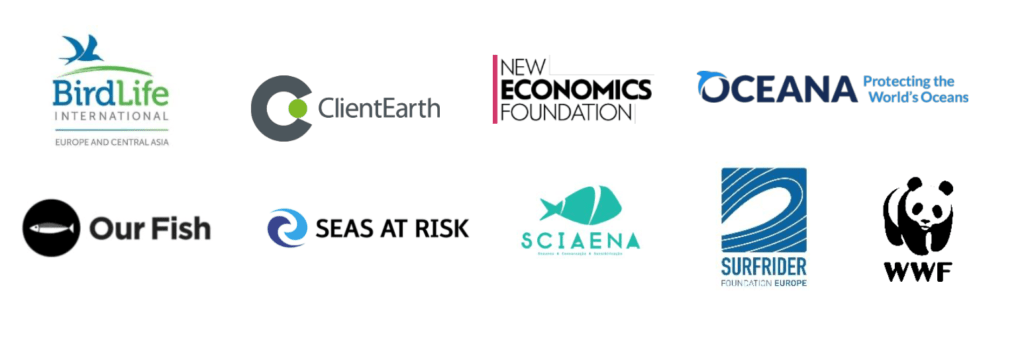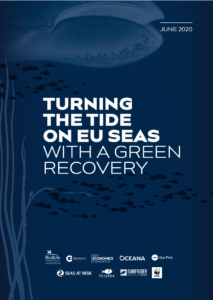 Download full paper: Turning the Tide on EU Seas with a Green Recovery (pdf)
Download full paper: Turning the Tide on EU Seas with a Green Recovery (pdf)
 Oceans cover almost three-quarters of the planet, yet we are only just beginning to discover the true extent of these ecosystems and their impacts on our lives. The marine environment provides up to two-thirds of the ecosystem services supplied by the planet’s natural capital. We know that the marine environment, and therefore the blue economy that depends on it, is particularly vulnerable. The climate and biodiversity crises have not been put on hold because of the pandemic and continue to need urgent attention and action.
Oceans cover almost three-quarters of the planet, yet we are only just beginning to discover the true extent of these ecosystems and their impacts on our lives. The marine environment provides up to two-thirds of the ecosystem services supplied by the planet’s natural capital. We know that the marine environment, and therefore the blue economy that depends on it, is particularly vulnerable. The climate and biodiversity crises have not been put on hold because of the pandemic and continue to need urgent attention and action.
There is great potential in green recovery where investments deliver a healthier environment and a healthier economy. Investments in the marine environment can yield particularly large returns. Yet, it is estimated that governments around the world spend over 22 billion dollars annually on capacity- enhancing, harmful financial incentives and subsidies in the fisheries sector alone. The marine ecosystem is already on the brink, yet the EU continues to invest in these harmful incentives. The EU’s Green Recovery plan is a golden opportunity to ensure that these resources are redirected and contribute to a sustainable recovery also at sea.
Long-term policies will need to enable a true Green Recovery. Financial investments will be mobilised to mitigate the economic fall-out of the COVID-19 crisis and to align the EU with its Green Deal ambitions. Therefore, it is crucial that the new recovery instrument, Next Generation EU and funding programmes such as the EMFF enable the EU to tackle our long-term environmental crisis and avoid undesirable trade-offs, while simultaneously improving the Union’s current economic prospects.
The paper dives into examples of investment opportunities in an effort to illustrate how a green recovery for the oceans is possible, for instance by:
- Actively restoring marine ecosystems, such as rebuilding oyster reefs and fish passages in coastal dams
- This can stimulate economic activities in sectors such as marine construction while increasing fish production, improving water quality and recovering threatened ecosystems.
- Enabling transparent, accountable and more selective fishing activities by scaling up remote electronic monitoring (REM)
- This type of technology further increases the transparency of catch data and improves confidence in scientific assessments.
- Stopping plastic pollution at its source through investing in the re-use/rental/re-fill sectors
- This win-win investment creates employment opportunities while stopping harmful pollution streams that are expensive or impossible to clean up.
The biodiversity and climate crises and the need to rebuild the EU’s economy go hand in hand. There is no reason not to invest in a green future for the ocean. Following the EU Green Deal, the Biodiversity Strategy and the Farm to Fork Strategy, future financial commitments that impacts seas and oceans must continue to build on this momentum and walk the walk of this political agenda.
Download full paper: Turning the Tide on EU Seas with a Green Recovery (pdf)
